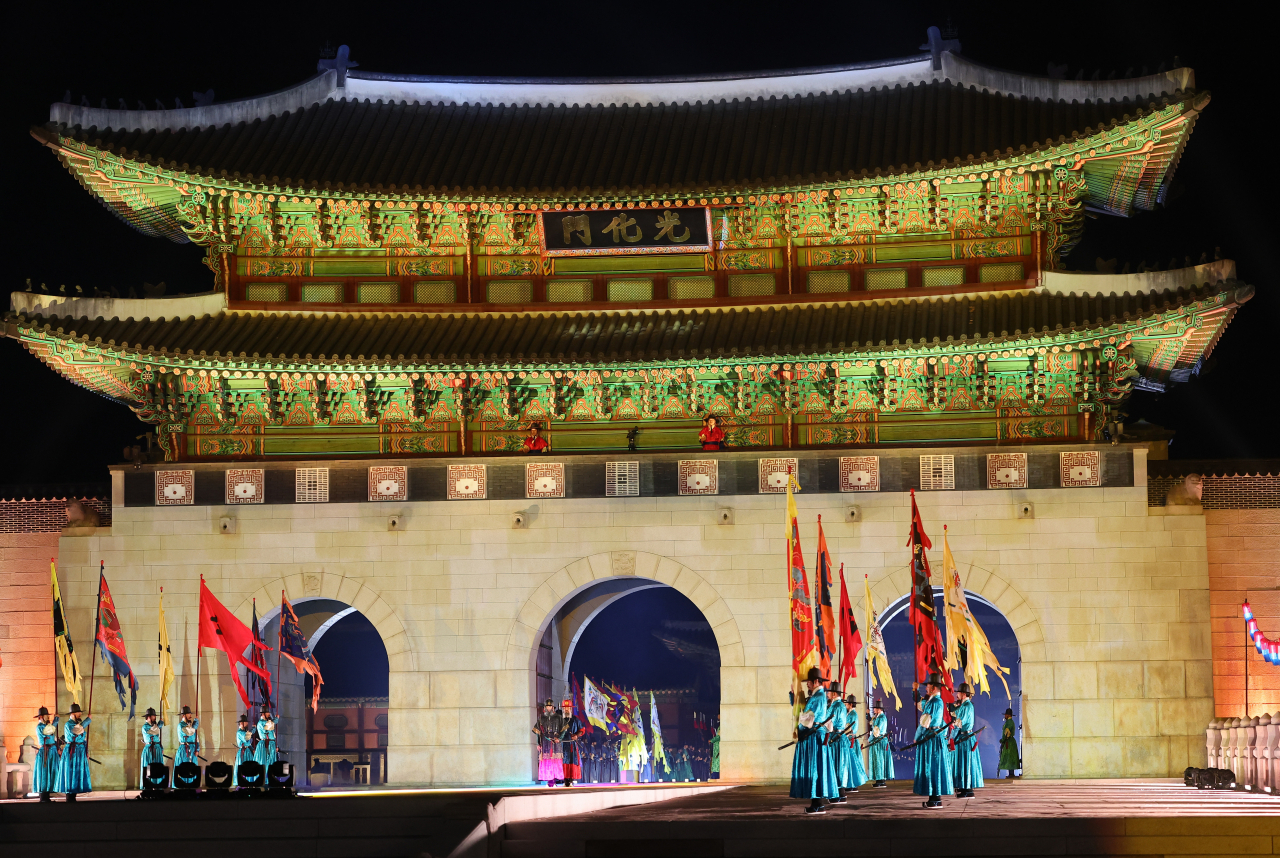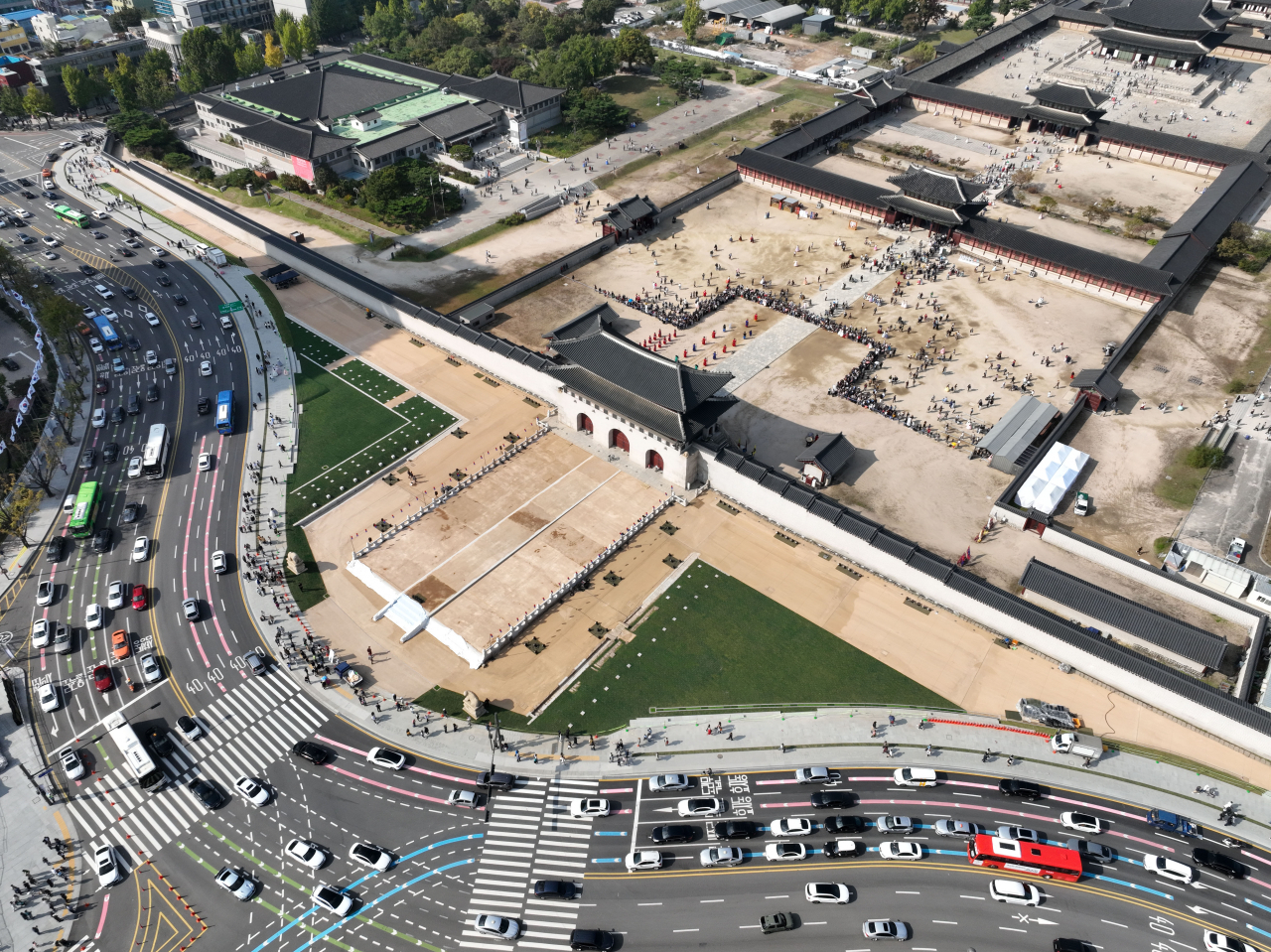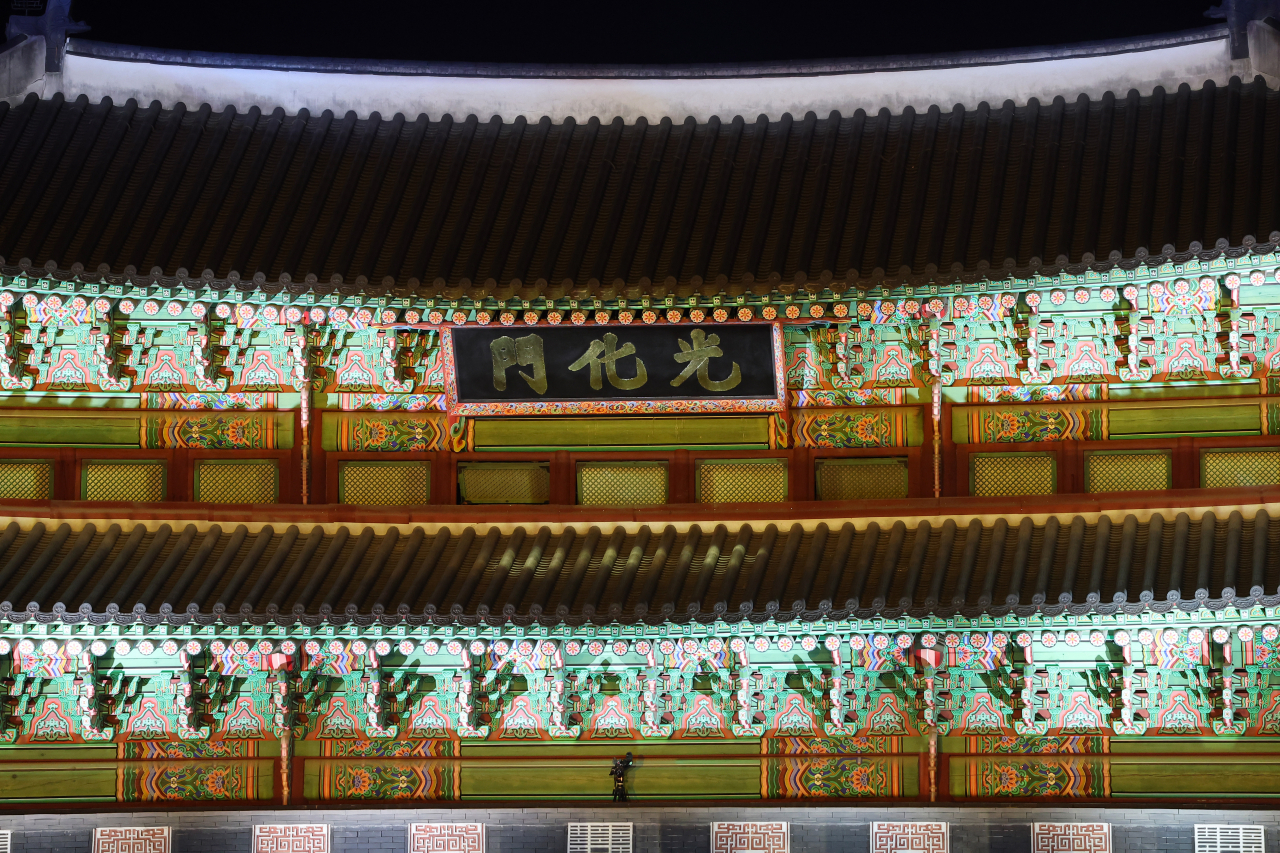Gyeongbokgung entrance platform, new signboard unveiled
By Kim Hae-yeonPublished : Oct. 15, 2023 - 15:10

A grand platform, called "woldae," in front of Gwanghwamun, the main gate of Gyeongbokgung in Seoul, opened to the public Sunday with a series of events, marking the restoration of the space that had been covered over to form a major traffic artery for about a century.
The event, marking the restoration of woldae and the new signboard on Gwanghwamun, took place at Gwanghwamun Square Sunday evening, attended by Culture Minister Yoo In-chon, Cultural Heritage Administration Head Choi Eung-chon, Seoul Mayor Oh Se-hoon and 500 members of the public.
Gugak singer Song So-hee and the Little Angels Children's Folk Ballet of Korea performed at the event.
Woldae is an elevated stone platform built in front of royal palaces of Joseon (1392 to 1910) where the king and the people convened at celebratory events, according to the Cultural Heritage Administration.
The platform measures approximately 48.7 meters in length and 29.7 meters in width. A 7-meter-wide path runs the length of the platform in the center, named "eodo," where only the king could walk.

Restoration of woldae began in 2021.
It is not known exactly when woldae at Gyeongbokgung was built, but scholars presume it was built during King Sejong's reign (1418-1450).
Gyeongbokgung was burnt down in the 16th century during the Japanese invasion of Korea and King Gojong (1863-1907) began a comprehensive palace rebuilding project. Woldae was rebuilt in 1867 as part of that effort.
Woldae was later wiped out by the Japanese colonialists during the construction of tram rails in front of Gwanghwamun in preparation for a Joseon industry expo in 1923, academic research showed.
Gwanghwamun's new signboard was also unveiled at Sunday's ceremony.

Made using wood from 200-year-old red pine trees, the signboard is emblazoned with the words "Gwanghwamun" in Hanja, or Chinese characters, in gold, on a black background. The new signage is based on the latest historical finding that the letters were painted in gold and the background black.
In recent times, two signboards were hung at Gwanghwamun: in 1968, the board bearing then President Park Chung-hee's calligraphy, and another board in 2010 that bore the replication of calligraphy by Im Tae-yeong, a Joseon-era public official responsible for the restoration of Gyeongbokgung. The 2010 signage was displayed in black letters on a white background.



















![[Today’s K-pop] Treasure to publish magazine for debut anniversary](http://res.heraldm.com/phpwas/restmb_idxmake.php?idx=642&simg=/content/image/2024/07/26/20240726050551_0.jpg&u=)